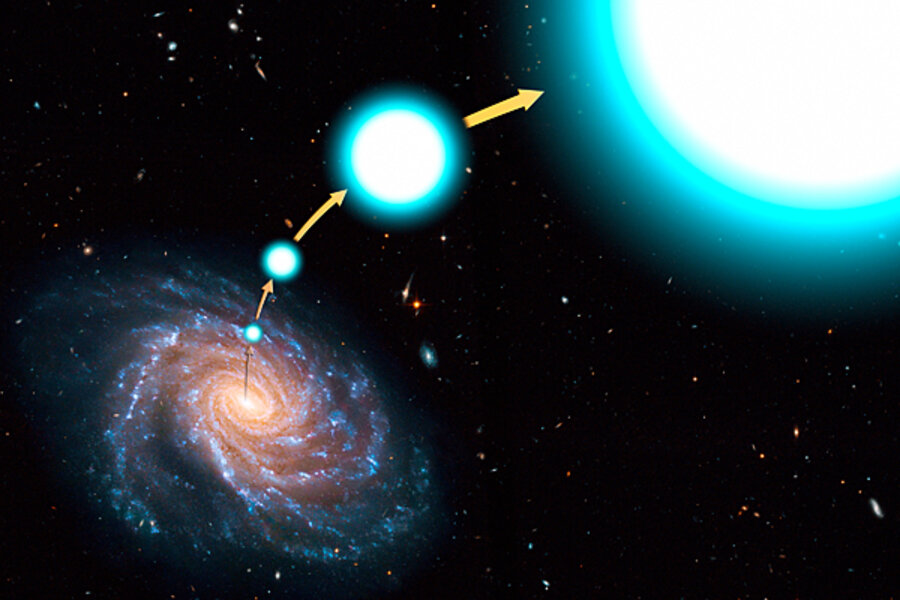Star kicked out of Milky Way by giant black hole
Loading...
A runaway star found racing through space at an incredible 2.5 million km an hour (1.6 million mph), suffered a brush with a monster black hole at the heart of our galaxy, astronomers believe.
Data collected using the Hubble space telescope suggests the speeding sun was part of a triple-star system that was drifting through the Milky Way a hundred million years ago.
But the threesome passed dangerously close to the centre of our galaxy where the supermassive black hole lurks.
The space scientists say it swallowed up one of the stars and booted the other two out of the Milky Way. As they flew, the two stars merged to form one super-hot blue star.
Labelled HE 0437-5439, it is now speeding about 200,000 light-years from galactic central point and high above the whirling disk of the Milky Way, according to a Hubble news release.
Around 16 hypervelocity stars are known, all of which have been discovered in the past five years. They are all suspected to have been flung from our galaxy’s centre but this is the first time the theory has been successfully tested.
As we reported two years ago, another team of astronomers previously suggested the star had been fired on its path by another yet-undiscovered black hole in a satellite galaxy of our own called the Large Magellanic Cloud.
But US Astronomer Warren Brown, of the Harvard-Smithsonian Center for Astrophysics in Cambridge, Massachusetts, a member of the Hubble team that observed the star, said: “Using Hubble, we can for the first time trace back to where the star comes from. Its motion points directly from the Milky Way center,”
“The star is travelling at an absurd velocity, twice as much as the star needs to escape the galaxy’s gravitational field. There is no star that travels that quickly under normal circumstances – something exotic has to happen.”
Watching hypervelocity stars is not simply a curiosity for astronomers. They believe that studying their trajectories could help them to learn how invisible dark matter is distributed around the galaxy. Astronomers claim to have proved the supermassive black hole exists by studying the motions of stars around it at the centre of the Milky Way.
• Discover space for yourself and do fun science with a telescope. Here is Skymania’s advice on how to choose a telescope. We also have a guide to the different types of telescope available. Check out our monthly sky guide too!
Paul Sutherland blogs at Skymania News





